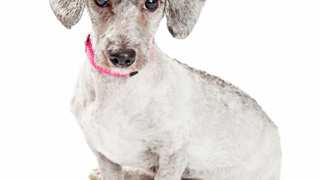Doxiepoo Breed Details
The Doxiepoo is a relatively recent breed that is one of the more popular hybrids of the "designer dog" craze. She's meant to be an entertaining little companion and the only work she cares about is making you laugh and smile. This breed is a good choice for the average owner. Their tendency to bark may make them unsuitable for apartments or condos unless they are trained very early. Ideally, they will have a fenced yard but this is not necessary if the owner can give them the appropriate daily exercise. They tend to do best in households without other pets but should be fine if socialized as a puppy.
Pros
- Size appropriate for apartments and condos
- Exercising them is fairly easy
- Make good watch dogs
- Affectionate and bonds deeply with owner
- If socialized early they can make loving family pets
Cons
- Training may take time and patience
- Tendency to bark often and dig
- Weary or strangers and territorial towards other dogs
- Tendency to chase cats and other small animals
- Not hypoallergenic and shed lightly but often








